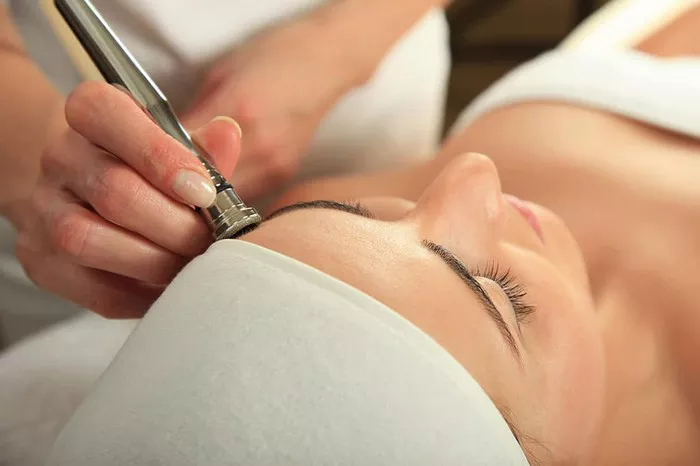Microdermabrasion is a popular skin treatment that involves using a handheld device to exfoliate the skin and remove the outer layer of dead skin cells. This process helps to improve the texture and appearance of the skin, reduce the appearance of fine lines and wrinkles, and treat acne and other skin conditions. If you are planning to undergo microdermabrasion, it is important to prepare your face properly to ensure the best results. In this article, we will discuss how to prepare your face for microdermabrasion.
Understanding Microdermabrasion
Before we discuss how to prepare your face for microdermabrasion, it is important to understand what microdermabrasion is and how it works. Microdermabrasion is a non-invasive skin treatment that uses a handheld device to exfoliate the skin and remove the outer layer of dead skin cells. This process helps to improve the texture and appearance of the skin, reduce the appearance of fine lines and wrinkles, and treat acne and other skin conditions.
Microdermabrasion is a safe and effective treatment for most skin types. However, it is important to prepare your face properly before undergoing the treatment to ensure the best results.
Preparing Your Face for Microdermabrasion
Preparing your face for microdermabrasion involves several steps. These steps are designed to ensure that your skin is clean, hydrated, and free from any irritants that could interfere with the treatment. Here are the steps to prepare your face for microdermabrasion:
Cleanse Your Face
The first step in preparing your face for microdermabrasion is to cleanse your face thoroughly. Use a gentle cleanser to remove any dirt, oil, and makeup from your skin. Avoid using harsh scrubs or exfoliants, as these can irritate your skin and interfere with the microdermabrasion treatment.
When choosing a cleanser for your face, look for one that is gentle and non-irritating. Avoid products that contain harsh chemicals or fragrances, as these can irritate your skin and make it more sensitive to the microdermabrasion treatment.
Avoid Sun Exposure
It is important to avoid sun exposure for at least two weeks before undergoing microdermabrasion. Sun exposure can cause damage to your skin and make it more sensitive to the microdermabrasion treatment. If you must go outside, wear a hat and apply sunscreen with an SPF of at least 30.
When choosing a sunscreen for your face, look for one that is oil-free and non-comedogenic. Avoid products that contain fragrances or other irritants, as these can cause your skin to become more sensitive and make it more prone to irritation during the microdermabrasion treatment.
Avoid Other Skin Treatments
It is important to avoid other skin treatments, such as chemical peels, laser treatments, or waxing, for at least two weeks before undergoing microdermabrasion. These treatments can irritate your skin and make it more sensitive to the microdermabrasion treatment.
If you are using any topical medications or skincare products, such as retinoids or exfoliants, it is important to stop using them at least one week before undergoing microdermabrasion. These products can make your skin more sensitive and increase the risk of irritation during the microdermabrasion treatment.
Hydrate Your Skin
It is important to hydrate your skin before undergoing microdermabrasion. Drink plenty of water and use a moisturizer to keep your skin hydrated. Hydrated skin is more plump and resilient, which makes it easier for the microdermabrasion device to glide over the skin.
When choosing a moisturizer for your face, look for one that is lightweight and non-comedogenic. Avoid products that contain fragrances or other irritants, as these can cause your skin to become more sensitive and make it more prone to irritation during the microdermabrasion treatment.
Consult with Your Dermatologist
If you have any skin conditions or are taking any medications that could affect your skin, it is important to consult with your dermatologist before undergoing microdermabrasion. Your dermatologist can advise you on the best way to prepare your skin for the treatment and ensure that it is safe for you to undergo the treatment.
Your dermatologist may also recommend additional steps to prepare your face for microdermabrasion, such as using a topical numbing cream to reduce discomfort during the treatment or avoiding certain foods or medications that could increase your risk of side effects.
Conclusion
Microdermabrasion is a safe and effective skin treatment that can help to improve the texture and appearance of your skin. To ensure the best results, it is important to prepare your face properly before undergoing the treatment. This involves cleansing your face, avoiding sun exposure and other skin treatments, hydrating your skin, avoiding retinoids and other exfoliants, and consulting with your dermatologist if necessary. By following these steps, you can ensure that your skin is ready for microdermabrasion and achieve the best possible results from the treatment.

